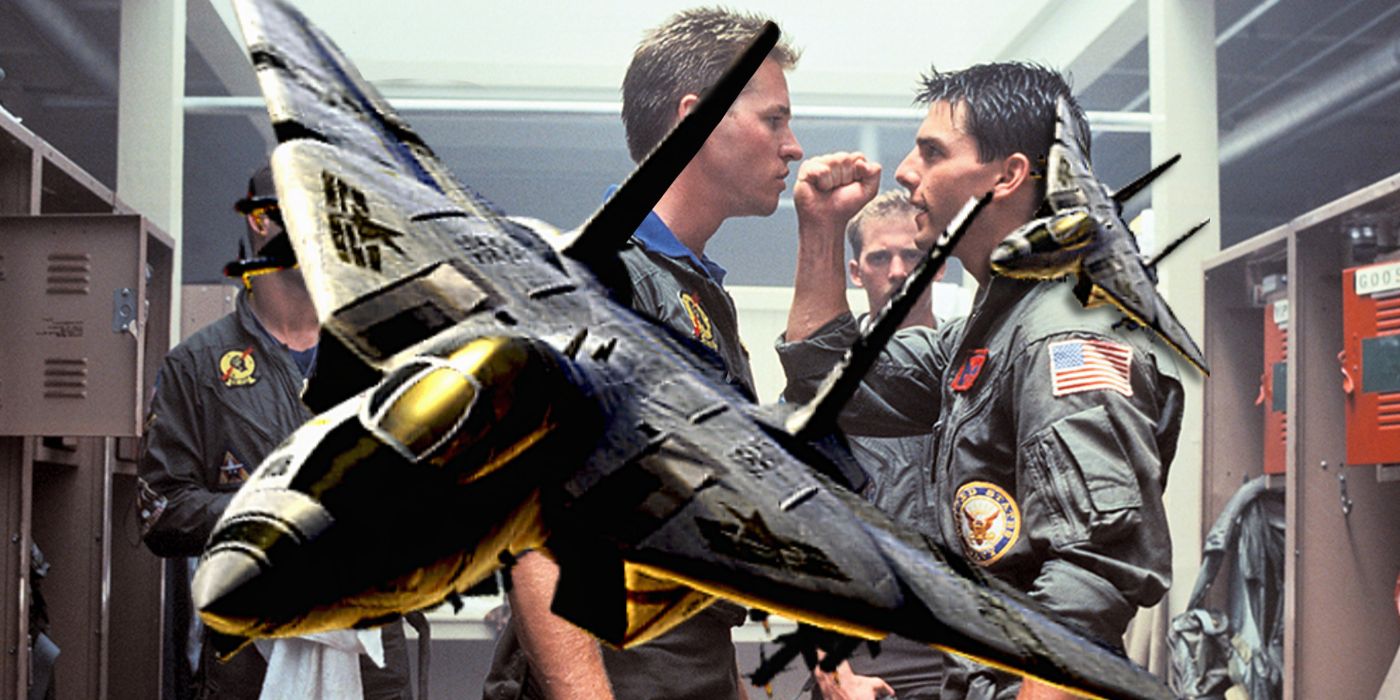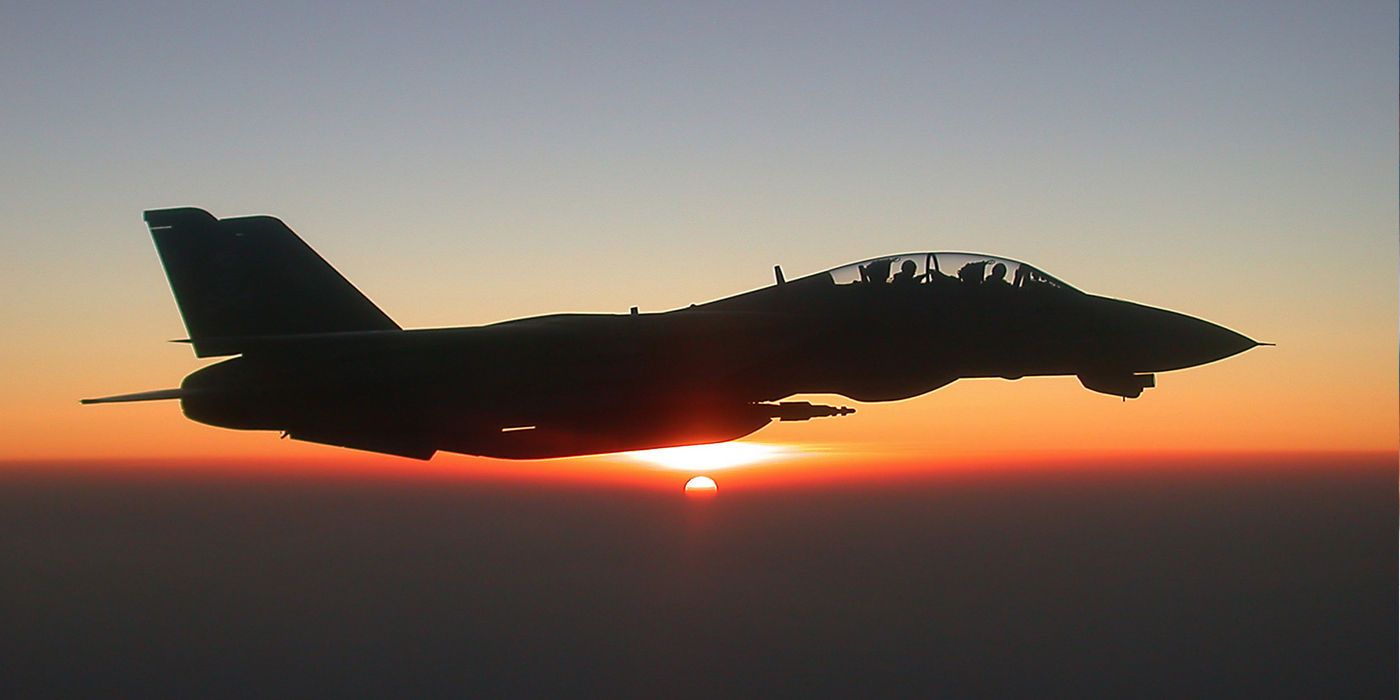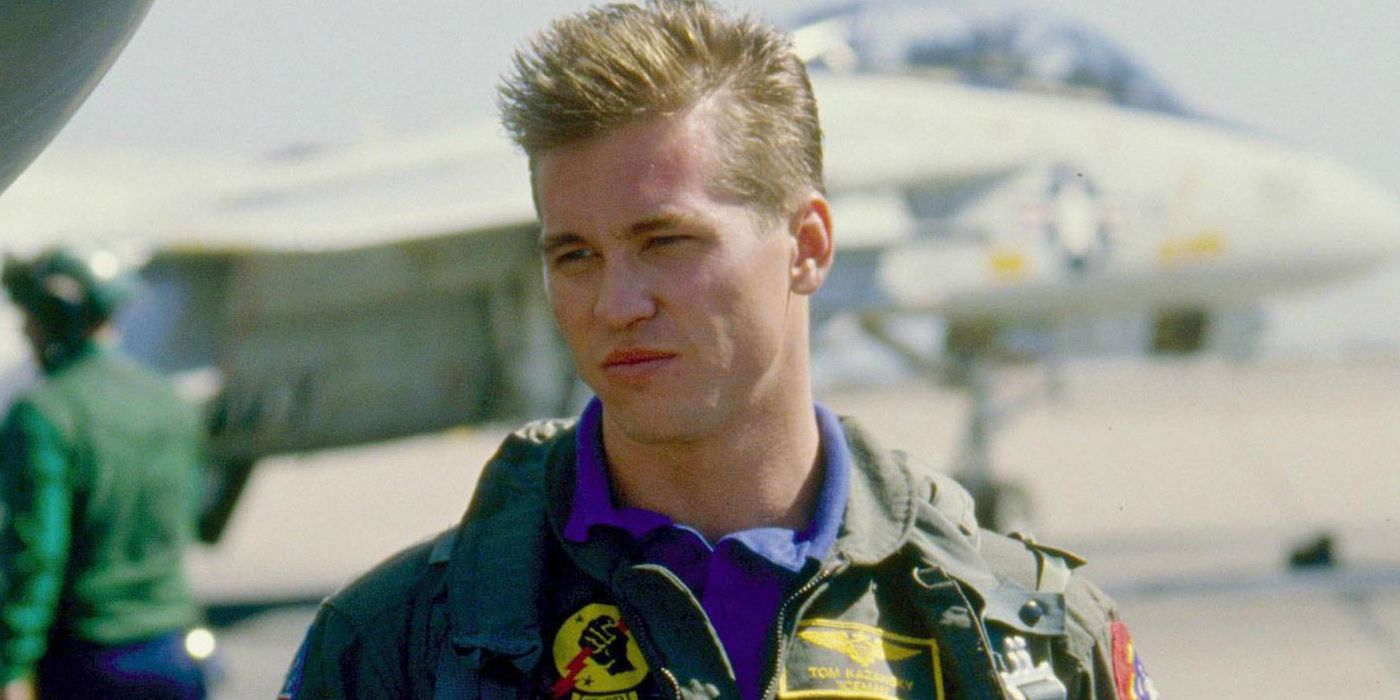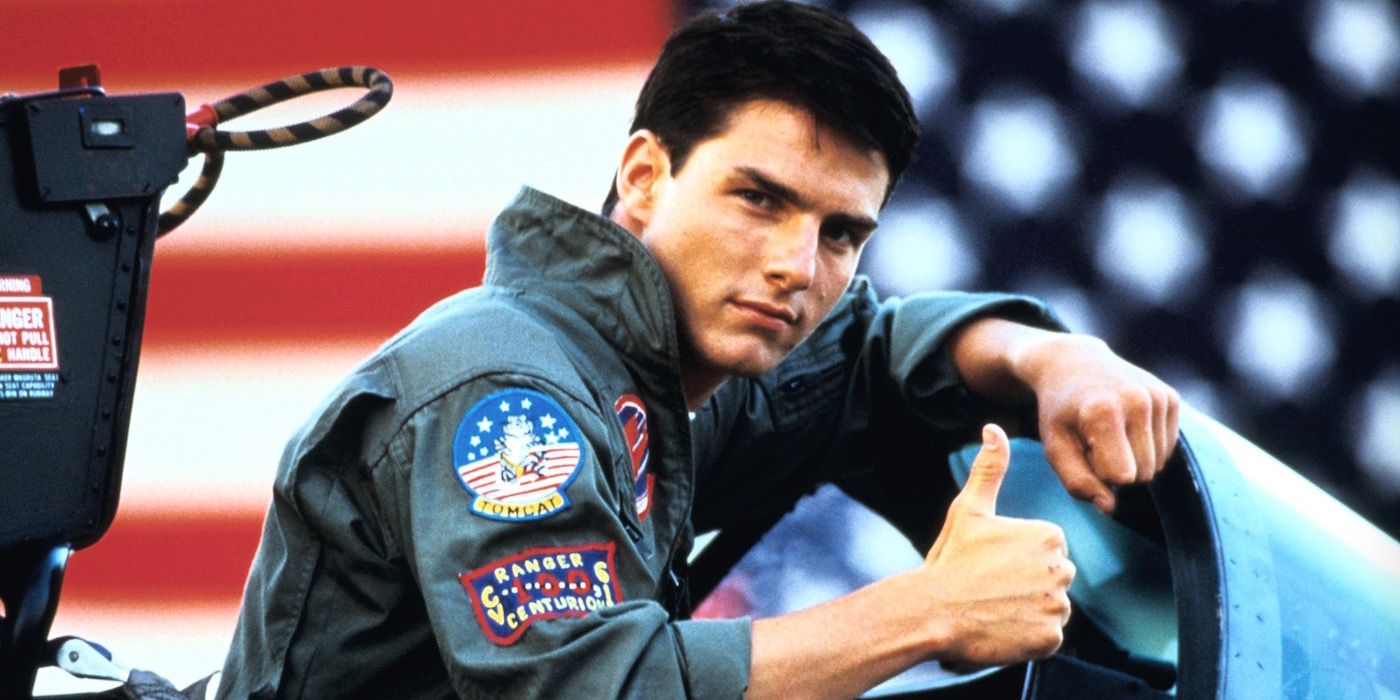
Top Gun is a beloved classic, and part of what fans love about the movie is its realistic elements when it comes to its flying sequences, but how close is the movie to real life? Directed by Tony Scott and released in 1986, the original Top Gun movie starred Tom Cruise as Pete "Maverick" Mitchell, a hotshot U.S. Navy pilot who competes with other young pilots such as Tom "Iceman" Kazansky (Val Kilmer), and pursues a romance with a civilian instructor named Charlie (Kelly McGillis).
Nominated for four Academy Awards, Top Gun was a huge film that impressed many with its dogfights and intense flying scenes, many of which centered on Tom Cruise's character, who famously piloted the F-14 Tomcat. In fact, Top Gun was credited with having a big impact on military recruiting, which explains why the U.S. Navy was so cooperative with the making of the film. Following the movie's release, recruitment numbers shot up tremendously, as it succeeded inspiring many young people into pursuing careers as Navy pilots.
The military appears to have taken a similar approach to the long-awaited sequel, Top Gun: Maverick, which puts its titular hero in the cockpit of a F/A-18F Super Hornet as he trains a new class of pilots. Paramount worked closely with the U.S. Navy, who allowed them access to a military base and Navy personnel. Cameras were attached to the Navy's Super Hornets to improve the movie's authenticity. The military played a big part in the filming of Top Gun: Maverick's action scenes to help the movie be as accurate as possible. How that will turn out remains to be seen, but what of the first film's accuracy? Here's how much Top Gun is based on real life.

In May of 1983, author Ehud Yonay published an article titled "Top Guns" in California Magazine. The article was a profile of a Navy pilot training center at Miramar, San Diego that had been nicknamed "Fightertown U.S.A.". It contained aerial photography and went into vivid detail when talking about the lives of pilots who flew the F-14 Tomcat and took the "Top Gun" course. The article was packed with descriptions about what they experienced when they took to the air while at the training center. The article includes quotes from pilots who Yonay interviewed for the story, and their remarks provided great insight into what it was like to fly these jets and how they were operated.
The article called the F-14 Tomcat a "the U.S. Navy's supreme air war machine, a huge luxurious monster that could have been designed by the Star Wars special effects crew". Through talks with the pilots, Yonay is able to put a together a detailed story of their day-to-day life at the school, the challenges they faced flying the jets, and how their instructors "hammered them into a team". Top Gun producers Don Simpson and Jerry Bruckheimer have confirmed that this California Magazine article was what inspired their movie, and much of what was described in the feature was used to build the background and events in the film.

Several real-life aviators have called Top Gun an accurate portrayal of life as a U.S. Navy pilot that succeeds in capturing the intensity of what it's like to fly a jet and the lives of the pilots outside of the jets (apart from the beach volleyball). Considering how much the Navy was involved in the making of Top Gun, it's no wonder how it was able to achieve this. The Navy's involvement helped avoid any significant inaccuracies. The competitive nature of the pilots, their relationships with each other, and the camaraderie that exists between them has also been praised by aviators as one of Top Gun's best qualities.
It's been said that the acting performances in the cockpit scenes are quite realistic in how they depict pilots trying to maneuver their jets through turns and away from missiles. Unlike other movies of its kind, Top Gun doesn't make this experience feel smooth at all, and rightly so. The head-on passes featured in Top Gun are accurate as well, and add a great deal to the realism of the film. There's also the matter of Goose's death, which occurred when he ejected after the F-14 went into a flat spin. It's worth mentioning that the cause of Goose's death in Top Gun stems from real problems with the F-14 Tomcat, which contributes to the shocking nature of the twist.
Top Gun is, of course, a fictional story, but a lot of it comes from the real world. After all, the place where the training takes place in the movie does indeed exist, as does the "Top Gun" training program. Kelly McGillis' character, Charlie was even based on a real person, Navy defense tactician Christine Fox.

Though Top Gun clearly tries to paint a realistic picture of what it's like to be a U.S. Navy fighter pilot, not everything about the film is accurate. There's quite a lot that Top Gun gets wrong, with one of the biggest gripes that aviators have about the film is the Top Gun trophy, which is a big part of the story. In the movie, Maverick, Iceman, and the others are eager to outdo each other and win the Top Gun trophy, which goes to the best fighter pilot in the class. However, such a trophy doesn't exist, as the Miramar training center was just that - a school, and not a competition. Furthermore, Maverick is a bit too rebellious and daring for him to keep his wings. His unpredictability and recklessness - major aspects of Tom Cruise's character - would have undoubtedly kept him from the "Top Gun" program.
Top Gun is filled with minor, technical inaccuracies and violation of protocol that weren't called out by other characters. Also, Top Gun's dogfights and flying sequences have been criticized for having the jets fly too close to each other, which wouldn't have happened. However, these scenes were shot this way for cinematic effect, which is likely the explanation for other inaccuracies.
from ScreenRant - Feed https://ift.tt/2tTewmi

0 Comments